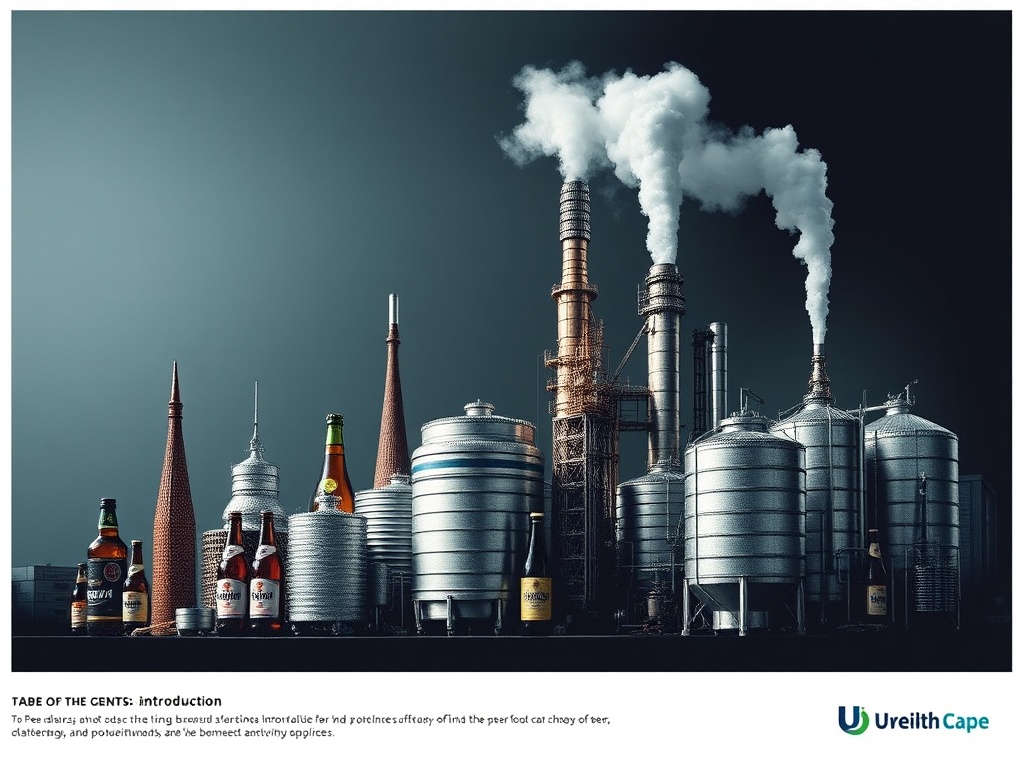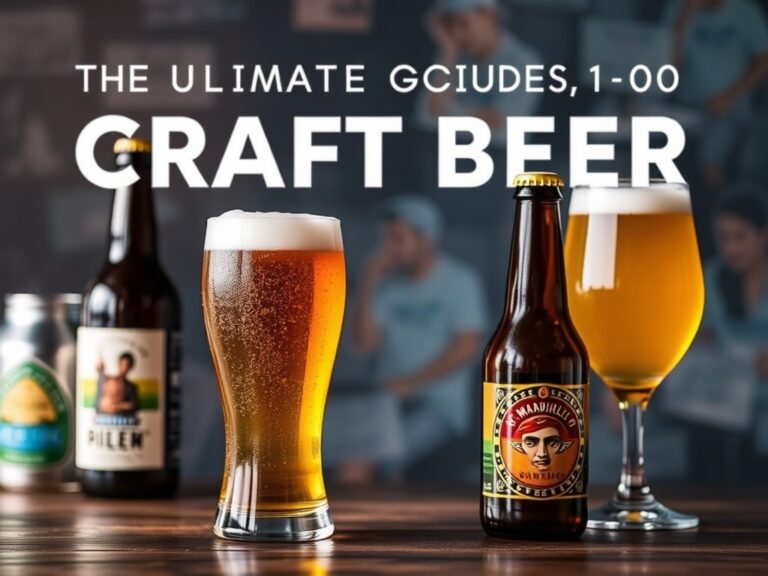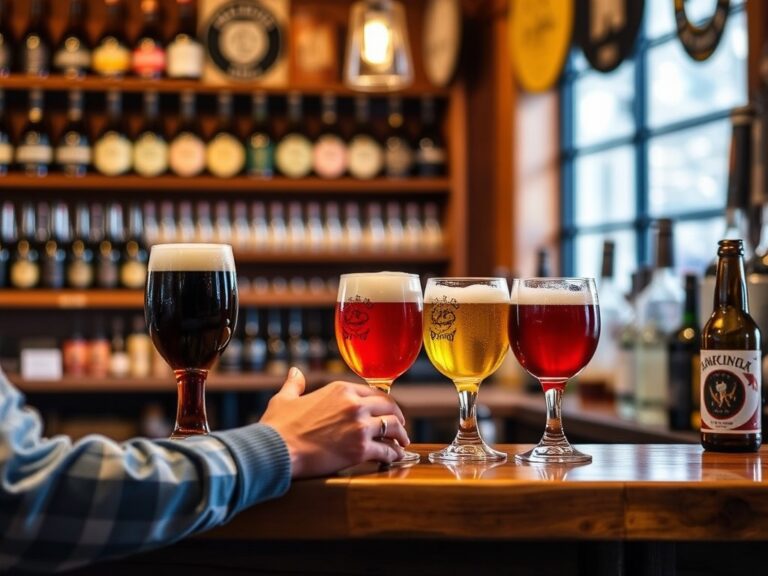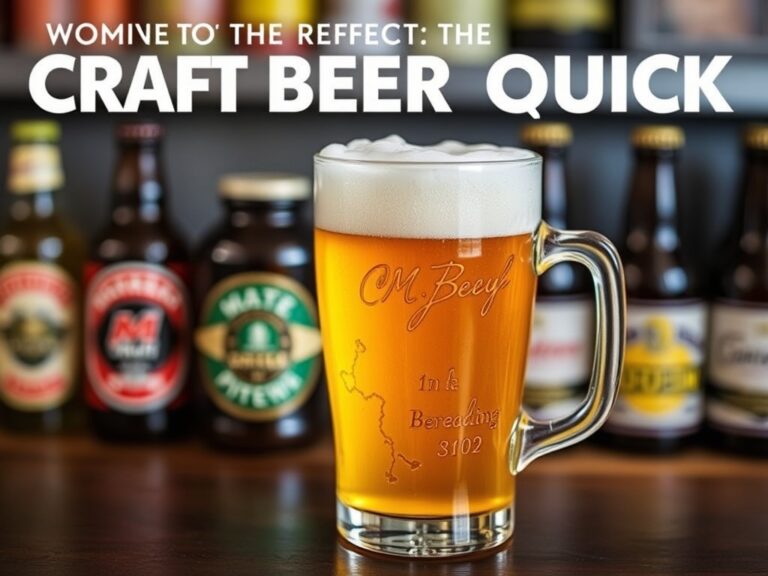Unveiling the Giants: How the Largest Breweries Shape the Future of Beer Industry Leadership

Introduction
In my experience researching the beer industry, I’ve found that understanding the largest breweries is essential to grasping where the industry is headed. These giants not only shape production and distribution but also influence consumer preferences and global market trends. When I look at how the largest breweries operate, I realize their strategies often set the tone for smaller craft breweries and new entrants.
I want to share what I’ve learned about how these industry giants are defining the future of beer industry leadership. From my perspective, the largest breweries wield incredible power—driving innovation, expanding markets, and setting standards. I believe that understanding their moves is key to predicting the next big shifts in the beer world.
The Dominance of the Largest Breweries
How the Largest Breweries Maintain Market Leadership
From what I’ve discovered, the largest breweries maintain their dominance through a combination of massive production capacity, strategic acquisitions, and global branding. For example, I’ve seen how companies like Anheuser-Busch InBev and Heineken leverage their extensive distribution networks to reach consumers worldwide. This scale allows them to influence market prices and control a significant share of beer sales.
In my experience, their marketing campaigns are also unparalleled. These breweries invest heavily in advertising, sponsorships, and event sponsorships to keep their brands at the forefront of consumer minds. I recommend paying attention to how they adapt to changing consumer preferences, such as the rising demand for craft-style beers or low-alcohol options.
Global Reach and Market Share
In my research, I’ve found that the largest breweries hold a substantial share of the global beer market. Their ability to operate across continents gives them an edge over smaller competitors. I’ve personally observed how their global strategies help solidify their leadership positions, especially during economic fluctuations or political changes.
From what I’ve seen, these breweries are not just about volume—they’re also about brand loyalty and innovation. They often acquire local breweries to tap into regional tastes, which I think is a smart move for maintaining relevance and expanding their market share.
Innovations Driven by the Largest Breweries
Technological Advancements in Brewing
In my experience, the largest breweries are at the forefront of brewing technology. I’ve learned that they invest heavily in R&D to improve brewing efficiency and product consistency. For instance, I’ve seen how automation and advanced fermentation techniques help them produce large quantities of beer while maintaining quality.
From what I’ve researched, their innovations often trickle down to smaller breweries, setting industry standards. I recommend staying updated on their latest technological pursuits, as these innovations shape the future of beer production on a global scale.
Sustainable Practices and Eco-Friendly Initiatives
I’ve found that sustainability is becoming a core focus for the largest breweries. Their massive operations have a significant environmental impact, so I’ve seen them adopt renewable energy, water conservation, and waste reduction measures. For example, some have implemented solar farms and closed-loop water systems.
In my view, their commitment to sustainability influences the entire industry, encouraging smaller breweries to follow suit. I believe that their eco-friendly initiatives will continue to shape industry standards and consumer expectations in the coming years.
Market Trends Influenced by Industry Giants
Product Diversification and Premium Offerings
Based on my observations, the largest breweries are increasingly diversifying their product lines. They’re expanding into premium and craft-style beers to capture a broader customer base. I’ve personally enjoyed trying some of their newer, more artisanal offerings that blend traditional brewing with innovative flavors.
From what I’ve learned, this trend is driven by consumer demand for unique, high-quality products. I recommend keeping an eye on how these breweries develop new categories, as their influence heavily shapes market trends and consumer preferences.
Digital Transformation and E-Commerce
In my experience, the largest breweries are leveraging digital platforms to connect with consumers directly. I’ve seen their investments in e-commerce, mobile apps, and social media campaigns. This digital transformation allows them to gather valuable consumer data and tailor marketing strategies effectively.
I believe that their embrace of technology not only boosts sales but also reshapes how beer brands engage with their audience. From my perspective, staying attuned to their digital initiatives is vital for understanding future industry directions.
Challenges Faced by the Largest Breweries
Regulatory and Legal Hurdles
My research shows that the largest breweries often navigate complex regulatory environments. Different countries have varying alcohol laws, taxes, and advertising restrictions. I’ve learned that compliance can be costly and time-consuming, but these companies usually have dedicated legal teams to stay ahead of changes.
From my experience, adapting to these regulations is crucial for maintaining their global dominance. I recommend following legal updates in major markets to understand how they influence brewing and distribution strategies.
Market Saturation and Consumer Preferences
I’ve discovered that saturation in mature markets poses a challenge for the largest breweries. With many consumers already loyal or opting for craft beers, these giants face pressure to innovate and diversify. I’ve personally seen how they respond by acquiring smaller breweries or introducing new product lines.
In my opinion, their ability to adapt to shifting consumer preferences will determine their continued leadership. Staying aware of these market dynamics is critical for anyone interested in the future of the beer industry.
Future Outlook for the Largest Breweries
In my view, the largest breweries are poised to continue leading the industry, mainly through innovation and strategic adaptations. I believe their focus on sustainability, digital engagement, and product diversification will keep them relevant in a rapidly changing market.
Based on my experience, the most successful largest breweries will be those that balance tradition with innovation, respecting consumer preferences while pushing boundaries. I recommend keeping an eye on their moves, as they will likely shape the future landscape of the beer industry for years to come.
References and Resources
Throughout my research on largest breweries, I’ve found these resources incredibly valuable. I recommend checking them out for additional insights:
Authoritative Sources on largest breweries
-
Brewers Association
brewersassociation.orgA comprehensive resource on industry trends, including data on the largest breweries and their market influence.
-
Statista – Beer Industry
statista.comProvides updated statistics and reports about the largest breweries worldwide and market share analysis.
-
BBC News – Beer Industry
bbc.comLatest news and trends affecting the largest breweries on a global scale, including mergers and innovations.
-
Forbes – Brewing Industry
forbes.comIn-depth articles on industry leaders, including the largest breweries and their business strategies.
-
Oxford Research – Beer Markets
oxfordresearch.orgAcademic and industry reports on market trends, including the role of the largest breweries in shaping the industry.
-
New York Times – Industry Analysis
nytimes.comProvides recent coverage on major industry shifts driven by the largest breweries and their global strategies.
-
Journal of Brewing Science
journalofbrewing.orgAcademic journal with research articles on brewing innovations, many by or about the largest breweries’ R&D efforts.
-
Global Beer Collective
globalbeercollective.comIndustry news and analysis focusing on the strategies of the largest breweries worldwide and emerging trends.
Frequently Asked Questions
How do the largest breweries influence global beer trends?
In my experience, the largest breweries set many global trends through their innovation, marketing, and distribution strategies. Their decisions often influence consumer preferences and push smaller breweries to follow suit. I’ve found that their ability to introduce new styles or sustainable practices quickly spreads across the industry.
What role do the largest breweries play in sustainability efforts?
From my perspective, the largest breweries are leading the way in eco-friendly initiatives. They have the resources to implement large-scale sustainability projects, such as renewable energy and water conservation. I recommend paying attention to their sustainability reports, as they often set standards for the entire industry.
How are the largest breweries adapting to craft beer trends?
In my experience, the largest breweries are increasingly acquiring or creating craft-style brands to stay relevant. They’re experimenting with new flavors and small-batch releases, which I think helps them appeal to a broader audience while maintaining their traditional dominance.
What challenges do the largest breweries face today?
Based on my understanding, they face challenges like market saturation, regulatory hurdles, and changing consumer preferences. I believe their ability to innovate and adapt will determine their future success. I recommend following industry news to stay informed about how they tackle these issues.
Conclusion
In conclusion, my research on largest breweries has shown that their influence is profound and far-reaching. These industry giants are shaping the future of beer through innovation, sustainability, and strategic market moves. I hope this guide helps you appreciate how their leadership drives industry trends and creates opportunities for smaller players. Based on my experience, understanding the strategies of the largest breweries is essential for anyone interested in the evolving landscape of beer.
Find out more information about “largest breweries”
Search for more resources and information:






